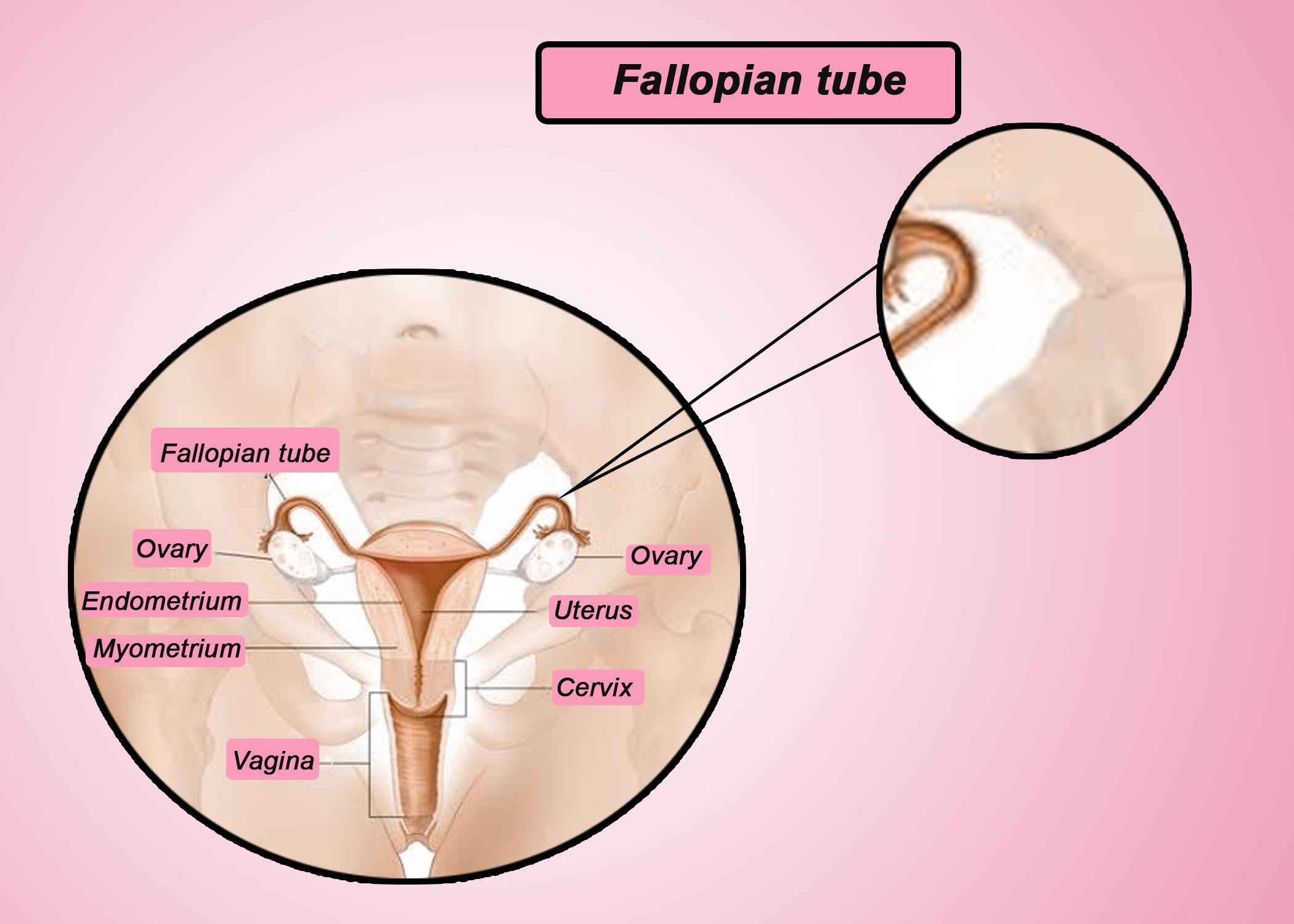
State the function of the fallopian tube.
Answer
485.4k+ views
Hint: They serve to transport ova from the ovaries to the uterus; they are also the site for fertilization of the ovum by sperm. The finger-like projections are associated with these structures.
Complete answer:
-The fallopian tubes are primary structures in the female reproductive tract, which connect the peritoneal cavity and uterine cavity.
-The Fallopian tubes are two tubes that extend from the uterus to the ovaries.
-The fallopian tube has three sections: the isthmus (narrow) which connects to the uterus, the bulb (wider) in the middle, and the infundibulum with fimbriae which serve to transport the ovum released from the ovary to the uterus.
- Fertilization of the ovum with sperm takes place in the ampulla, after that the fertilized ovum is transferred to the uterus for implantation.
- Each month, during the process of ovulation, one of the ovaries releases an egg that goes to one of the fallopian tubes, where it may or may not be fertilized by sperm.
-An ovary is not directly connected to the Fallopian tube. When ovulation is about to occur, the sex hormones activate the fimbriae (finger-like projections of the fallopian tubes), causing them to fill with blood and hit the ovary in slow motion.

Note: -The main function of the uterine tubes is to help transport the egg from the ovary to the uterus.
.-Women who no longer want children can have their tubes tied to prevent eggs from moving from the fallopian tubes into the uterus. This process is called Tubectomy.
-Transport of the sperm occurs due to the peristaltic movements of the fallopian tubes.
Complete answer:
-The fallopian tubes are primary structures in the female reproductive tract, which connect the peritoneal cavity and uterine cavity.
-The Fallopian tubes are two tubes that extend from the uterus to the ovaries.
-The fallopian tube has three sections: the isthmus (narrow) which connects to the uterus, the bulb (wider) in the middle, and the infundibulum with fimbriae which serve to transport the ovum released from the ovary to the uterus.
- Fertilization of the ovum with sperm takes place in the ampulla, after that the fertilized ovum is transferred to the uterus for implantation.
- Each month, during the process of ovulation, one of the ovaries releases an egg that goes to one of the fallopian tubes, where it may or may not be fertilized by sperm.
-An ovary is not directly connected to the Fallopian tube. When ovulation is about to occur, the sex hormones activate the fimbriae (finger-like projections of the fallopian tubes), causing them to fill with blood and hit the ovary in slow motion.

Note: -The main function of the uterine tubes is to help transport the egg from the ovary to the uterus.
.-Women who no longer want children can have their tubes tied to prevent eggs from moving from the fallopian tubes into the uterus. This process is called Tubectomy.
-Transport of the sperm occurs due to the peristaltic movements of the fallopian tubes.
Recently Updated Pages
Express the following as a fraction and simplify a class 7 maths CBSE

The length and width of a rectangle are in ratio of class 7 maths CBSE

The ratio of the income to the expenditure of a family class 7 maths CBSE

How do you write 025 million in scientific notatio class 7 maths CBSE

How do you convert 295 meters per second to kilometers class 7 maths CBSE

Write the following in Roman numerals 25819 class 7 maths CBSE

Trending doubts
Give 10 examples of unisexual and bisexual flowers

Draw a labelled sketch of the human eye class 12 physics CBSE

Differentiate between homogeneous and heterogeneous class 12 chemistry CBSE

Differentiate between insitu conservation and exsitu class 12 biology CBSE

What are the major means of transport Explain each class 12 social science CBSE

Draw a diagram of a flower and name the parts class 12 biology ICSE




